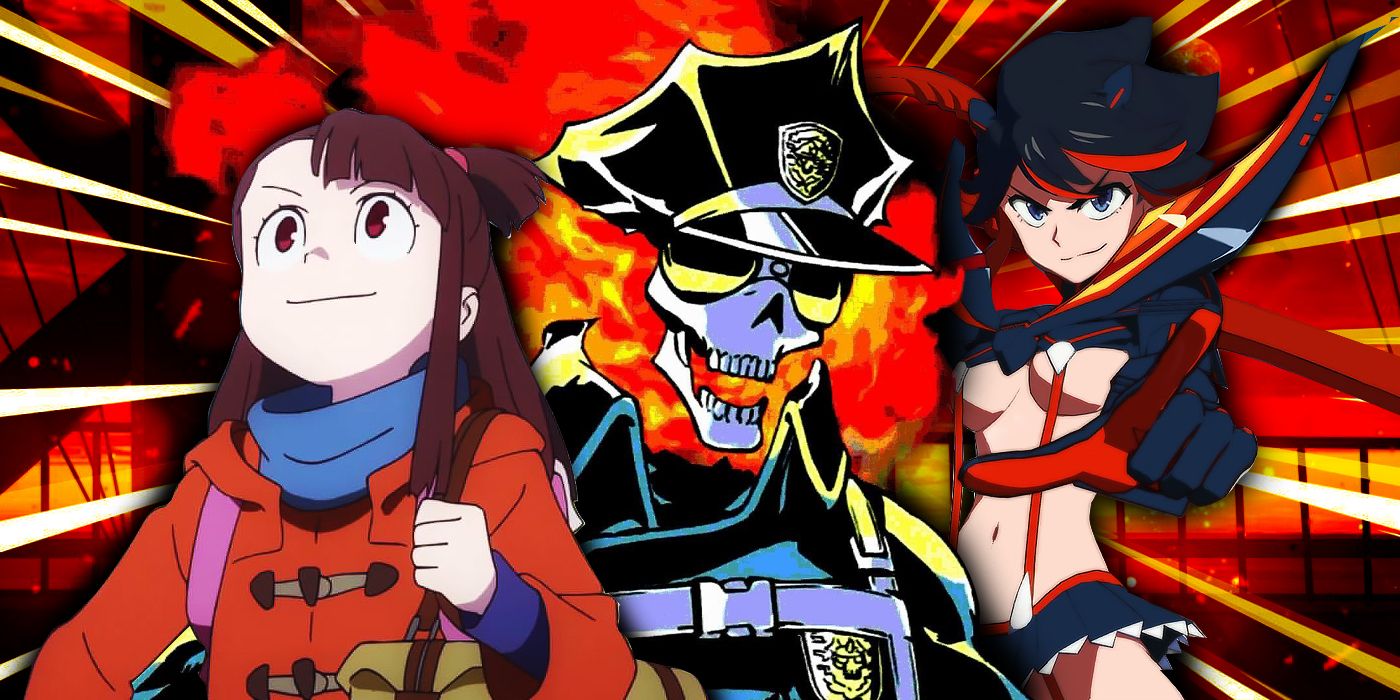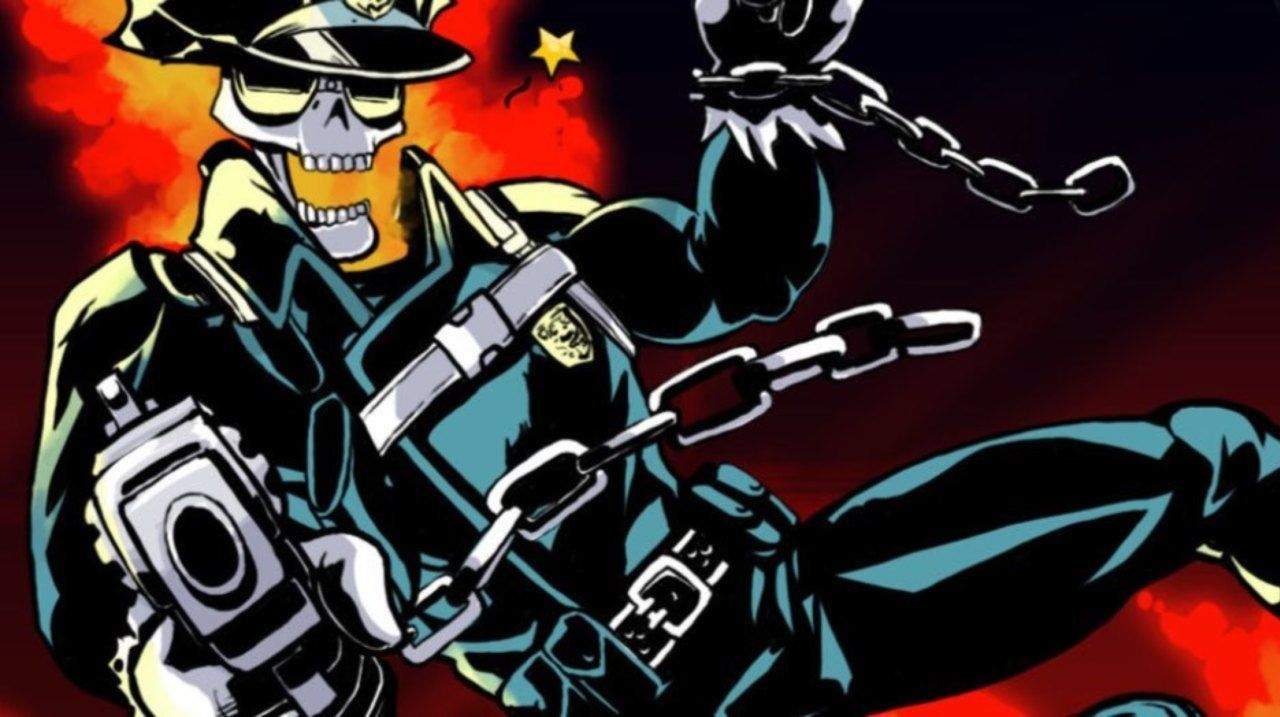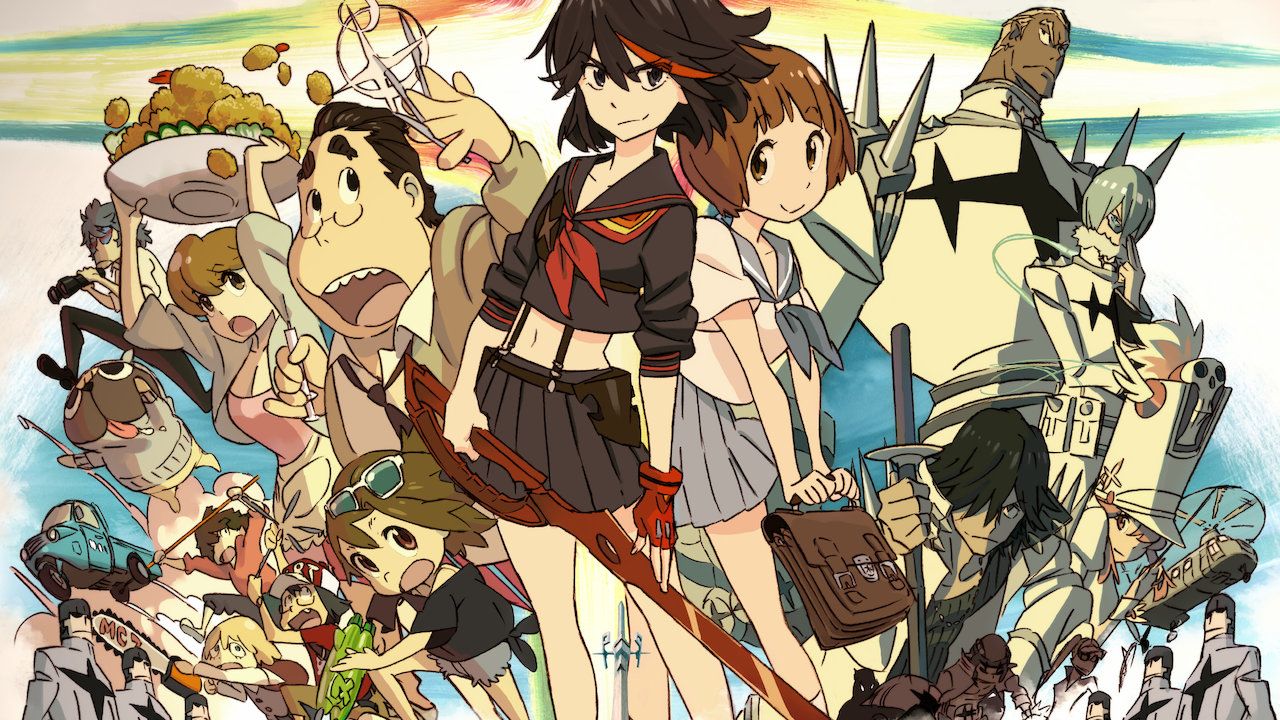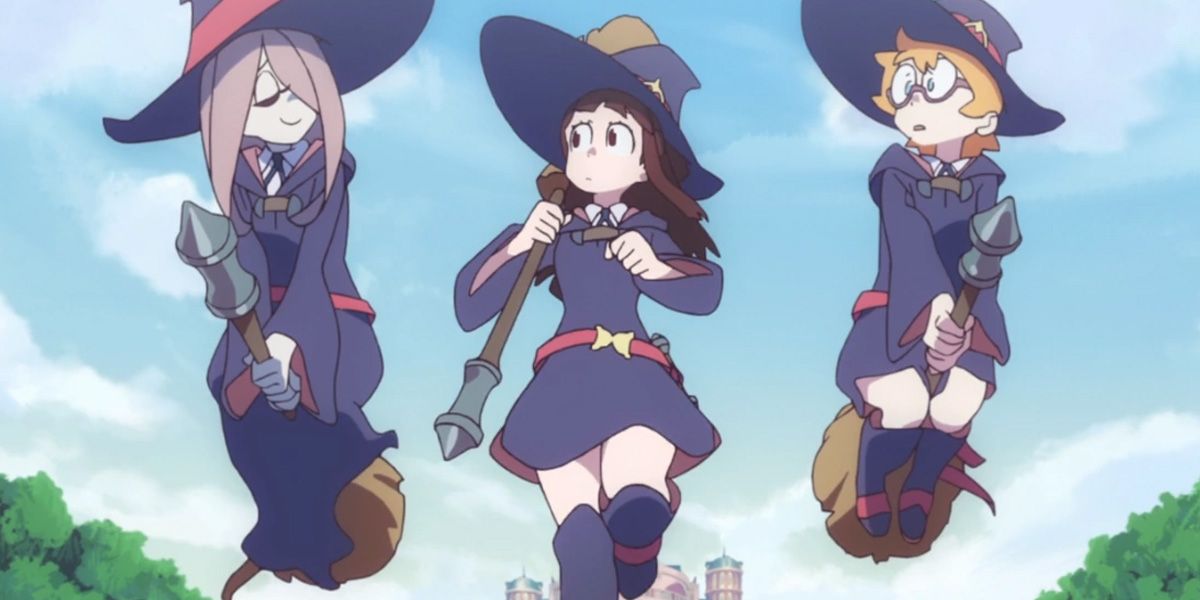Back in 2007, a super robot anime called Gurren Lagann came out that would change the landscape of the medium forever. Gurren Lagann was a bright, energetic show following one boy as a fateful encounter with a robot leads him from living in fear underground to restoring humanity itself, one high octane battle at a time. It came from studio Gainax, whose biggest names before Gurren Lagann were director Hideaki Anno and his masterpiece Neon Genesis Evangelion. Gurren Lagann, though, was the creation of Hiroyuki Imaishi, an animator who had been working on Gainax productions - including animating parts of Evangelion itself - before finally being able to helm his own whole series. Gurren Lagann carried the Gainax nerd-powered spirit, being filled with references and overflowing with energy, but leaned heavier into the desire to simply have fun than the work of his seniors at the studio. Gurren Lagann earned him notoriety immediately, including awards at various animation and arts festivals in Japan such as the Japan Media Arts Festival.
Not long after in 2011, Imaishi founded Studio Trigger with fellow Gainax alum Masahiko Otsuka. Trigger filled itself with people similar to Imaishi, talents who wanted to celebrate the works that inspired them but also create something new they could call their own. Otsuka has said regarding their intentions with the studio, "We want to deliver our voices from the production team to the fans", which makes sense when you look at their work. Their shows are often self-referential, with characters from various Trigger series showing up in later Trigger shows, which keeps fans connected to their catalogue not just individually but as one big package. In addition, Trigger is one of the best studios in terms of communication with fans, going to plenty of conventions, posting production materials online, and even starting a Patreon.
It's been ten years since Trigger was founded in August 2011. With a decade of work behind them and a bright future ahead, let's take a look at just a handful of them that exemplify their work ethic, fan-centric ideals, and desire to create the best cartoons they can.
Inferno Cop
Trigger’s very first foray was in 2012's Inferno Cop. Inferno Cop is about the titular character, a “cop from hell” named Inferno Cop who is supposed to be going around stopping bad guys but ends up having wacky adventures instead. As a new studio still looking for funding, Trigger showed how creative and resourceful they can be by making a show as cheaply as possible, but with all the charm and humor you would expect. To wit, they made each Inferno Cop episode in about two hours each week. Assets are flat and constantly reused, episodes are short with breakneck pacing, and the voice cast is small, consisting of twelve total actors who play many roles each.
Still, Imaishi trusted director Akira Amemiya, who had worked with him on shows like Gurren Lagann and Panty & Stocking with Garterbelt, to lead the series as Amemiya's first head directorial role. The result is a funny show that uses its limited resources to become something unique that could never have existed if not for their restrictions. With Inferno Cop, Trigger proved that they are a studio that will create, no matter what stands in their way. Amemiya has since directed other Trigger shows like SSSS.Gridman and the spiritual successor to Inferno Cop, Ninja Slayer From Animation.
Kill la Kill
With a few smaller projects under their belt, Imaishi was finally ready to direct Trigger's first TV series in 2013 with Kill la Kill. Like all Imaishi works, Kill la Kill's premise is built on absurdity, featuring a world that is ruled with an iron fist by a high school student council. Social and economic status are represented by the power of the clothes people wear - some of which are literally alive - and the student council gives and takes away these clothes as they see fit. The protagonist is also a Trigger classic, an underdog girl working her way up from the bottom of this strange caste system to free the people and learn wild truths about the already crazy world she lives in.
In Kill la Kill's convoluted plot and stylish animation you can still find Imaishi and company's scrappy, DIY attitude. The concept of a world ruled by clothes was stumbled upon with the simple observation that "fashion" and "fascism" are pronounced similarly in Japanese. The show's animation, while distinct and sometimes stunning, is still usually incredibly limited even by anime standards. Imaishi's crew makes it work, masking the less fluid sequences with sheer style and bravado. And, of course, they manage to fit in homages all over the place, utilizing their nostalgia by marking flashbacks with grainy 4:3 ratio scenes and designing various battle outfits directly inspired by mecha anime dating back to the '70s. Kill la Kill brought Trigger to the world's attention, and it still holds up as representative of their stylistic can-do ethos today.
Little Witch Academia
If there is a single series that serves as the best reflection of Trigger's trajectory as a studio, it's Little Witch Academia. It started life as a short film, one of four projects released in 2013 by the Young Animator Training Project, a government-funded program designed to give new creatives a chance to gain real experience. Later, almost as a precursor to their current Patreon, Trigger partially financed a follow-up by crowdfunding fans through Kickstarter. FInally, having proven themselves like one of their protagonists, Little Witch Academia was finally made into a full 24-episode series, releasing worldwide on Netflix in 2017.
Little Witch Academia’s director Yoh Yoshinari is another old Gurren Lagann animator, and with his directorial debut the story of Little Witch Academia reflects Trigger's in many ways. The hero Akko grew up inspired by the flashy antics of an older, talented magician. Much like how Yoshinari and friends grew up watching the most impressive of classic anime and aspired to imitate them, Akko decides to take up magic, even though she has very little natural affinity for it. She is constantly running into new problems at school, feeling restricted by her abilities and social status, but she always finds a creative solution and rises to the top. While the story is ostensibly about learning magic, it has a strong thematic throughline about the power of creativity, the messy but rewarding experience of expressing yourself, and that is the concept that defines Trigger more than any other.




